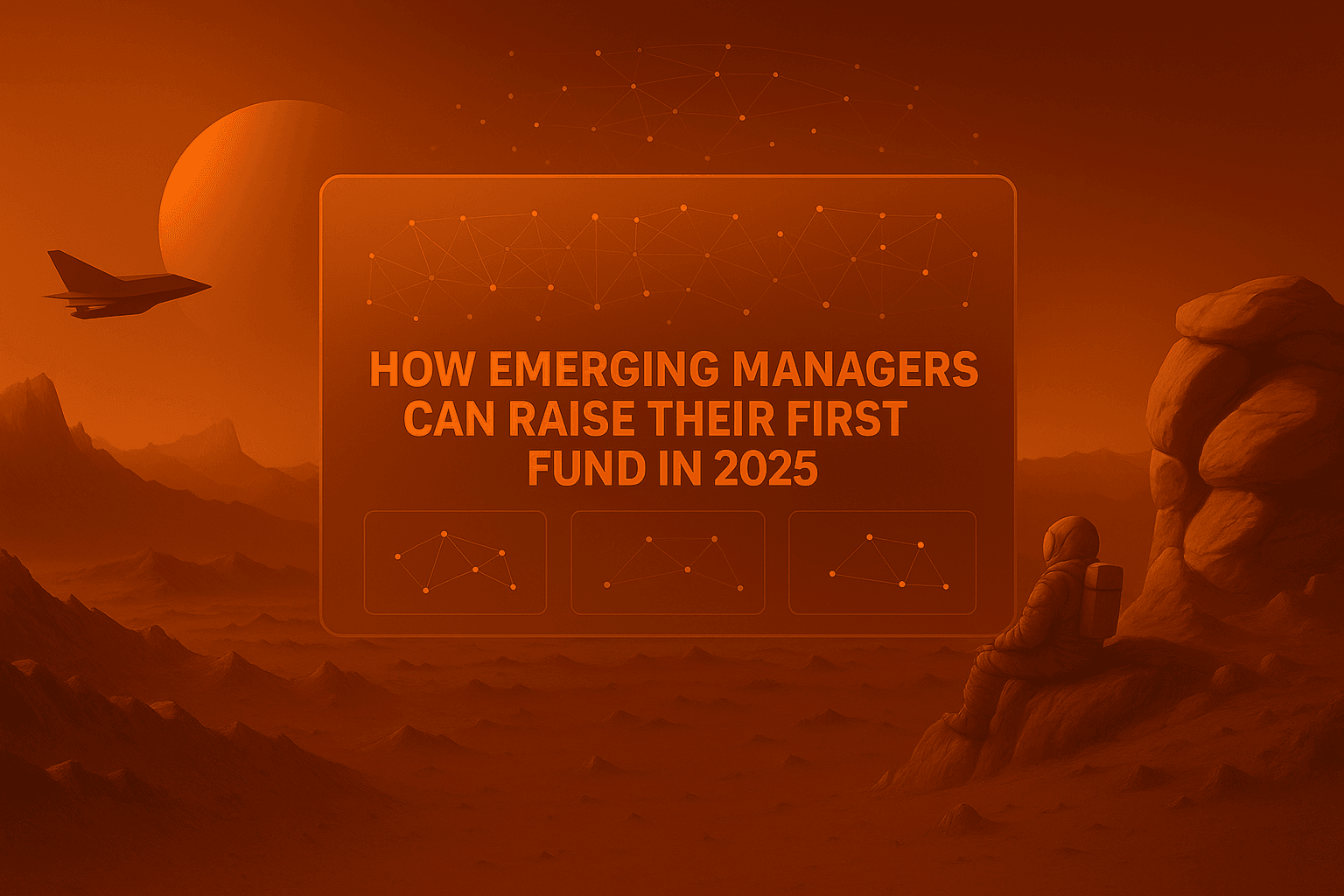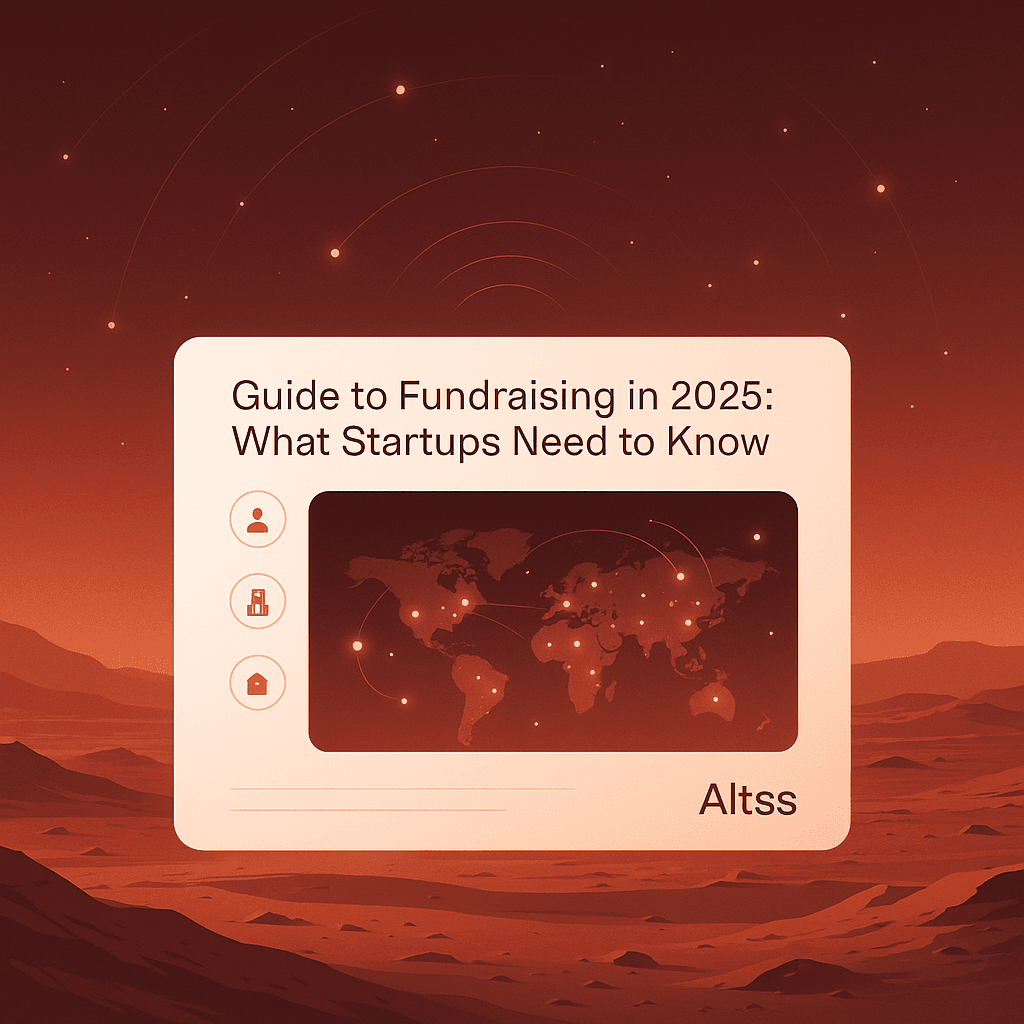How Emerging Managers Can Raise Their First Fund in 2025
How emerging managers can raise their first fund in 2025: a precise, step-by-step playbook that covers allocator targeting, pipeline math, ILPA-aligned diligence, OSINT signals, and modern outreach. Written for GPs and IR teams using verified allocator data and real-time LP coverage.

How Emerging Managers Can Raise Their First Fund in 2025
Fund I isn’t impossible in 2025. It’s just less forgiving. The old playbook — blast a thousand emails, attach a deck, ask for 30 minutes — mostly dies in the first five seconds of an allocator’s inbox. Decision-makers are inundated, risk teams are louder, and the expectation is that a manager runs fundraising like a real operating function: precise ICP, verifiable sourcing engine, ILPA-aligned materials, and clean, human outreach.
The big shift: fundraising is no longer a one-way monologue; it’s a proof-of-operations exercise. You’re not selling a story; you’re showing a machine.
“If you don’t catch the eye, your email won’t be opened. If you send a deck straight away, the conversation often ends there.”
Why this matters
LPs aren’t closed for business. They’re selective. They respond to managers who show focus, discipline, and evidence. That means fewer “updates,” more substance. Fewer “circling back” notes, more reasons to lean in: a crisp fit with mandate, a visible warm path, and reporting that looks like it can scale on day one.
In practice: think 2026 tech posture, not 2000. Live dashboards over static slides. Signal-driven outreach over autopilot sequences. “Here’s how we decide and mark” over “Here’s our vision.”
Why warm introductions still win — and how to find them without luck
Warm paths remain the most reliable unlock everywhere — from New York family offices to Abu Dhabi institutions to Singapore wealth platforms. But warm doesn’t mean “I know a guy.” In 2025, a warm intro is traceable, documentable, and verifiable. It comes from four predictable places:
1) Portfolio-backed credibility. A CEO who can say, “They were the first call at 11 p.m. and the reason we cleared diligence,” beats five reference letters. If your portfolio is thin, borrow credibility from co-investors and operating advisors who actually saw your process, not just your pitch.
2) Shared governance and deal history. Ex-board observers, co-leads, and counsel who sat through marks and hard write-downs carry more weight than social proximity. A one-line email from a partner who watched you mark fairly does more than a glowing testimonial.
3) Event adjacency — pre-wired. Real warm paths are often booked weeks before the conference. Not “we’ll be around,” but “we saw your team’s mandate shift and have a one-page showing exactly where we fit; can we hold Thursday 9:40–10:00?” The meeting exists because you created a reason, not because you bought a badge.
4) Second-degree connectors you can explain. Alumni, former clients, vendor relationships, policy advisors, or FoF analysts who underwrote a prior vehicle. The rule: if you can’t diagram the connection in two sentences, it’s not warm.
This is where OSINT turns into something useful. A warm intro is the output of pattern-finding: public filings and LP reports, event agendas, portfolio press, team moves, co-investment trails, and alumni rosters that reveal who actually knows whom — and why.
What earns the first 20 minutes
Modern allocator workflows are time-guarded. The only reliable way to win a first call is to feel relevant before you speak. Three ingredients do the lifting:
A narrow, legible ICP. Two or three allocator lanes where you truly fit — e.g., SFOs doing direct co-invests in your niche; FoFs that already underwrite your stage; RIAs with alt sleeves aligned to your liquidity profile. Broad lists feel like you don’t know your own product.
A one-page memo, not a deck. One screen. What you back and why; where your deals come from; how you decide; what ownership you target; how you report. You’re telling them, “We run a process you can diligence quickly.”
A warm path. Someone whose judgment they recognize — a previous co-investor, board advisor, or portfolio CEO who will vouch for your selection and post-investment work. Warm paths don’t replace substance, but they compress skepticism.
The edge that travels
No allocator will outsource conviction to your adjectives. They will, however, trust repeatable mechanics:
Sourcing clarity. Where looks come from, how many you see, how you triage. Not “proprietary deal flow,” but “here are the channels, here’s the acceptance rate, here’s how a ‘no’ is recorded.”
IC discipline. A visible decision framework beats a loud thesis. Even one anonymized memo — including a disciplined pass — says more than five logos.
Valuation and write-down rules. If you can explain how you mark and when you mark down, you signal maturity. This is where many first-time managers lose the room.
Ownership and reserves. How you get paid to be right. Clear targets, a reserves policy that isn’t back-of-napkin, and a plan for follow-ons when reality resists your model.
The thread through all of this is simple: LPs fund managers who look like they’ll be easy to underwrite and easy to monitor.
Outreach that doesn’t get filtered
Stop spamming on autopilot. It burns domains and patience. High-signal, low-volume messages get replies because they carry context:
- Lead with fit, not flattery. Mention the specific mandate pattern you map to.
- Offer proof, not attachments. “Happy to share our ILPA-aligned template and one-page” reads like someone who respects time.
- Follow with intent. After a call, send crisp notes and the exact artifacts they asked for — nothing extra, nothing late.
You’ll notice something counterintuitive: fewer emails, more meetings.
Inside the room
What moves discussions from polite to serious isn’t charm. It’s operational credibility.
Be audit-ready early. Even if rules shift, evaluators expect professional basics: valuation policy, conflicts policy, cyber hygiene, and a clean reporting template. Don’t scramble later; it reads as improvisation.
Show your losses. A short “what we passed on and why” page is worth gold. It proves judgment and saves LPs from thinking you only have upside stories.
Bring a human cadence. Rigorous doesn’t mean robotic. Vary the tempo, use plain language, and own your learning curves. LPs fund managers they believe they can call when things get weird.
The first close is a strategy, not a date
Momentum is not an accident; it’s a sequence. You line up a handful of anchor-capable conversations and say so. You close when you can credibly announce real progress — enough to widen the funnel without looking like you’re begging for the next dollar. That first close doesn’t need to be half the fund; it needs to be undeniable.
What happens next is compounding: better intros, faster diligence, cleaner calendars. The market is predisposed to take you seriously once someone else already has.
What to stop doing (today)
- Quit attaching a full deck to cold emails. It forces a decision too early.
- Quit “circling back” without a reason. Every touch should advance the evaluation: a new KPI slice, a co-invest alignment, a better warm path.
- Quit framing spam as “top-of-funnel.” You aren’t selling mattresses; you’re asking to be audited.
How Altss fits — the OSINT angle
This is the point where a modern tool either helps you be precise or gets out of the way. Altss was built for managers who want to run a lean, signal-led process:
- Verified allocator data. A large, continuously verified family-office universe and expanding institutional LP coverage designed to reduce guesswork, not inflate vanity counts.
- Real-time LP coverage (≤30-day refresh). Profiles and contacts stay live, so you’re not pitching ghosts.
- Signals and warm paths. Mandate shifts, team moves, and events intelligence to time your ask and map the shortest credible route to a decision-maker.
- Deliverability discipline. Verified contacts and bounce checks so your low-volume, high-relevance approach keeps domain reputation intact.
- Pricing: Altss pricing: $15,500/year.
The bigger point: this is 2026-style fundraising. You don’t need a giant team if you have verified data, live signals, and the discipline to write like a person.
A short scenario
An emerging manager in energy transition narrowed the universe to allocators already underwriting infrastructure-like risk. Before a major conference, they used signals to identify who was likely to attend and mapped three warm paths through former co-investors. No deck in the first touch — just a one-pager and a note offering ILPA-ready reporting, including how they mark down. Nine short meetings led to two anchor-level soft commits within two months. The story didn’t sell itself; the process did.
The mindset shift
Raising your first fund in 2025 is not about collecting “maybe later”s. It’s about manufacturing a handful of “yes, now”s by being the easiest team to underwrite. You do that by acting like a manager who has already built the machine: tight ICP, live sourcing mechanics, visible decision hygiene, and human outreach that respects the reader. Everything else is decoration.
FAQs
Is 18–24 months a realistic timeline for Fund I?
Yes. Some managers move faster, but planning around that cadence keeps you honest and prevents desperate behavior near the finish line.
Should I ever send a deck on first contact?
Only when asked. A tailored one-pager paired with an offer to share ILPA-aligned materials is the better opener.
How important is a GP commit for a first-time fund?
It matters. If cash is tight, combine a reasonable commit with clear operating discipline and, where appropriate, fee waivers structured with counsel.
What reporting do LPs expect from day one?
A simple, consistent quarterly template: fees and expenses, marks and methodology, reserves, and key risks. If it reads like it could scale to Fund III, you’re on the right track.
What’s the best way to keep momentum after first close?
Write a concise quarterly letter with actual throughput metrics and one co-invest or reserves story that shows the machine working. Keep asking for specific next steps.
Related articles

Anchor Investors for Emerging Managers & Startups: The 2025 Playbook
A step‑by‑step playbook for landing an anchor investor (or LP), understanding anchor vs. lead, structuring first closes, and creating momentum in your round.

Guide to Fundraising in 2025: What Startups Need to Know
A tactical guide for startup founders navigating the 2025 capital market. Learn what investors expect, where capital is flowing, and how OSINT-powered platforms like Altss can help you raise smarter from seed to Series C.